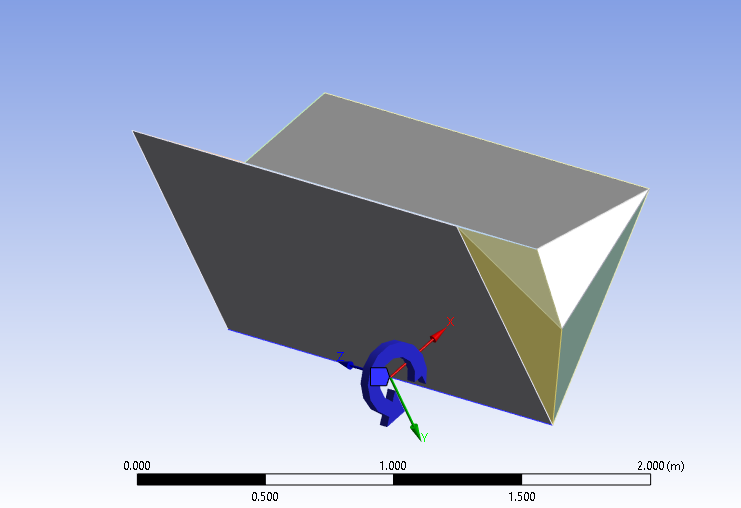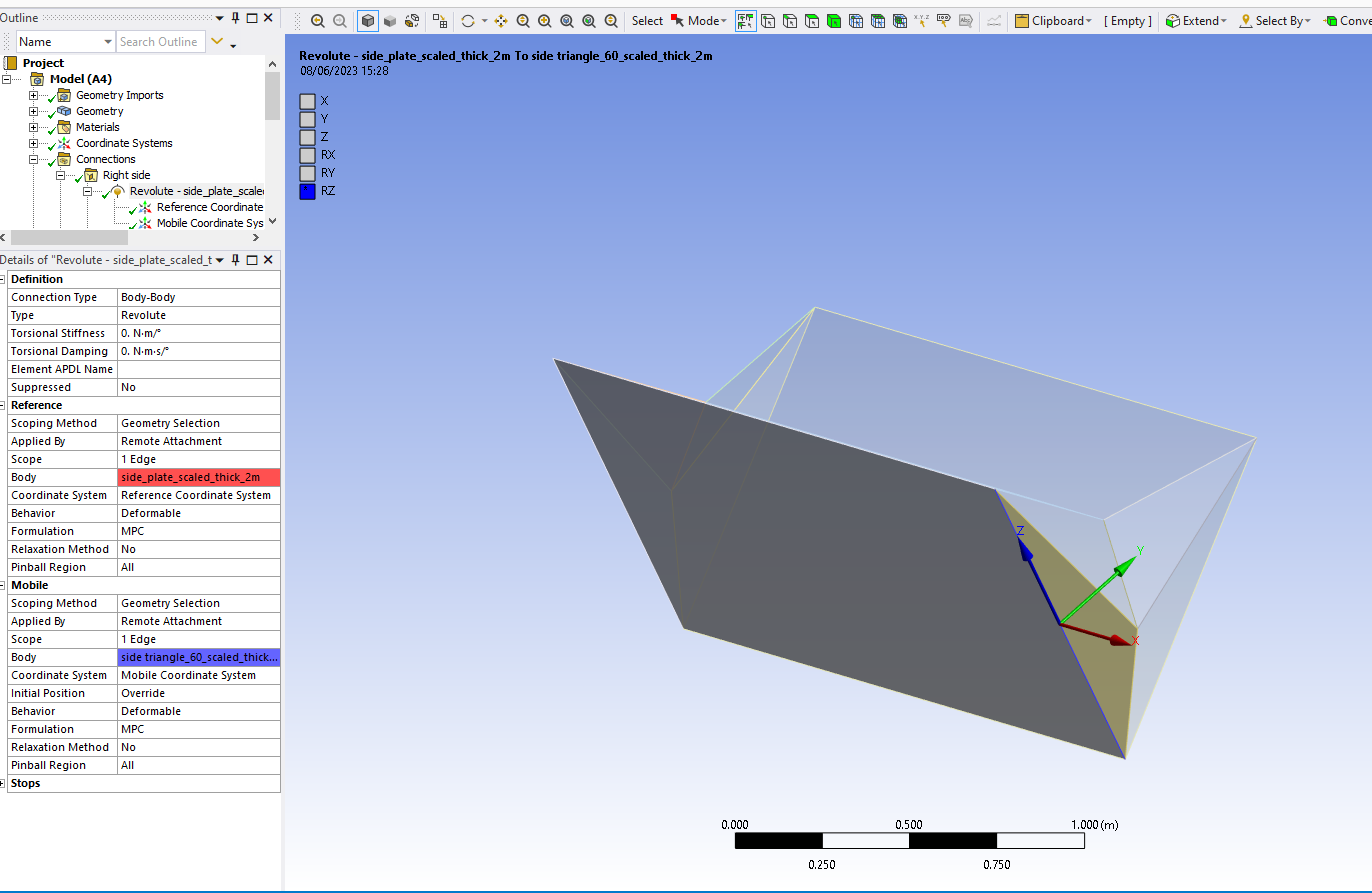-
-
May 3, 2023 at 11:00 am
Shanshan Cheng
SubscriberI wonder in a revolute joint connection, how to use 'direct attachment' rather than 'remote attachment' for reference and mobile bodies? The default remote attachment always lead to seperation due to over-constraint of multiple revolute joint connections. What I would like to achieve is that the whole assembled system will deform (generating internal stresse) to accomodate the over-constraint of all revolute joints. Please let me know how to achieve this function if possible. Thanks a lot!
-
May 3, 2023 at 5:12 pm
peteroznewman
SubscriberPlease show your whole assembled system and the loads and constraints you want to apply so we can see what you are trying to accomplish. Show which edges you want to have a revolute joint on.
-
June 13, 2023 at 3:59 pm
Shanshan Cheng
SubscriberWould anyone be able to help please? Thanks a lot!
-
-
June 8, 2023 at 2:39 pm
Shanshan Cheng
SubscriberThanks. Please see below the geometry and the revolute joint set up. The clam is made up of multiple rigid (steel) and flexible (rubber) plates, which are connected using revolute joints. There are a large number of revolute joints in the model (essentially all the shared edges are revolute joints). Overall the model is over-constrained. That's the purpose of the model - to use the over-constraints to stretch the rubber plates. The boundary conditions are fixed at one rectangle plate, and joint rotation of the bottom joint. The revolute joints are connected at the shared edges. Ideally I would like to use 'direct attachment', but it always give me yellow highlights. The problem of the default 'remote attachment' is that the edges always seperate due to the over constraints. Please advise what's the best option to achieve what we want to do. Thanks!
-
February 15, 2024 at 5:58 pm
dlooman
Ansys EmployeeDirect Attachment isn't supported for solid bodies because the nodes don't have the rotational dof needed to fully support the revolute joint. The joint would be able to just spin about its own axis. If you can't get Remote Attachment to work, perhaps you could overlay an adjacent face with shell elements to that the nodes have rotational dof. Your use of revolute joints to stretch the rubber plates seems like an unusual method. Are you sure there's no other way?
-
February 16, 2024 at 10:14 am
Shanshan Cheng
SubscriberThanks Dave. Those are already shell elements. The connections are supposed to work like revolute joints in reality, with all other dof restrained apart from the axial rotation. Do you have any suggestions to achieve it in ansys? Also, I would like the flexible parts to be membrane only. I would be very grateful if you could share some lights on how to get it work in ansys. Thanks!
-
February 16, 2024 at 5:27 pm
dlooman
Ansys EmployeeDirect Attachment should have been possible then. Making shells membrane only is an option in the body details, but it's not a good idea. Membrane only shells tend to fall apart and not converge.
-
- The topic ‘How to use ‘direct attachment’ in a revolute joint connection’ is closed to new replies.



-
3717
-
1313
-
1163
-
1090
-
1014

© 2025 Copyright ANSYS, Inc. All rights reserved.









